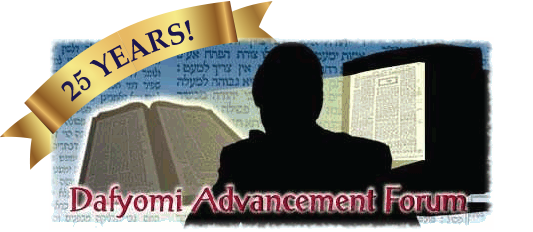What was Yisro referring to when he said, "v'Hizhartah Es'hem Es ha'Chukim v'Es ha'Toros"?
Ramban: He means issuing them a strict warning about keeping the Mitzvos, and about the punishments that are due for not keeping them.
What was Yisro referring to when he said, "v'Hoda'ta Lahem Es ha'Derech Yeilechu Bah, v'Es ha'Ma'aseh Asher Ya'asun"?
Targum Yonasan: "V'Hoda'ta Lahem" - refers to Davening in Shul; "Es ha'Derech" - to visit the sick; "Yeilechu Bah" - to bury the dead and to perform Chesed; "v'Es ha'Ma'aseh" - to carry out Din; "Asher Ya'asun" - to go Lifnim mi'Shuras ha'Din" with the Resha'im.
Bava Kama 99a: "V'Hoda'ta Lahem" as 'Zeh Beis Chayeihem;' 1 "Es ha'Derech" - 'Zeh Gemilus Chasadim;' "Yeilechu" - Zeh Bikur Cholim;' "Bah" - 'Zo Kevurah;' "v'Es ha'Ma'aseh, Asher Ya'asun" - See answer #1.
Mo'ed Katan 8a: "Es ha'Derech Yeilechu Bah" teaches us that marking graves 2 is a Torah obligation. 3
Kidushin 2b: Grammatically speaking, "Yeilechu Bah" teaches us that the term "Derech" is sometimes feminine. 4
Rashi there explains this to mean to study of Torah; whereas Rashi to Bava Metzi'a 30b says it means to earn a livelihood. For Maharal, see the following question.
To prevent people from inadvertently walking over them and becoming Tamei.
See Torah Temimah, note 28.
See Torah Temimah, note 29.
The Gemara (Bava Metzia 30b) interprets this Pasuk as follows - "'And you shall inform them' (v'Hoda'ta Lahem) - This is 'Beis Chayeihem;' 'The path' (Es ha'Derech) - to perform acts of kindness; 'On which they shall go' (Yeilechu) - i.e., visiting the sick; 'In it' (Bah) - i.e., burial; 'And the deed' (v'Es ha'Ma'aseh) - i.e., justice; 'Which they shall do' (Asher Ya'asun) - beyond the letter of the law." Why did Chazal make these derivations here, and what is their meaning?
Maharal (Chidushei Agados Vol. 3, p. 18, to Bava Metzia 30b): a. 'Beis Chayeihem' means Olam ha'Ba. 1 The Pasuk says "v'Hoda'ta," and the term "Yedi'ah" signifies life - as in Koheles 9:5. 2 Olam ha'Ba is the life that is one's ultimate success.This is followed by three degrees of Chesed - b. Gemilus Chasadim - even when not absolutely necessary for the recipient; c. Bikur Cholim - for a patient who is ill and in danger, and needs the attention of the visitor. d. Kevurah is an absolutely vital need for the recipient. 3 Gemilus Chasadim is referred to as "Derech," because by performing Chesed one ascends the path of the ways of Hashem, 4 and each level of Chesed is an additional step on that "Derech." e. Din is a "Ma'aseh" - One must act in accordance with the Dayan's ruling. f. (The doubled term of Asiyah means) to act Lifnim mi'Shuras ha'Din. 5
Maharal differs here from Rashi. (a) Rashi to Bava Metzia 30b explains 'Beis Chayeihem' as teaching them a trade, with which to earn a livelihood. Maharal (loc. cit.) asks - How is this alluded to by our Pasuk, "v'Hoda'ta Lahem"? (b) Rashi to Bava Kama 100a explains 'Beis Chayeihem' as the study of Torah. Maharal grants that the term "Yedi'ah" does often refer to Torah, but in our Pasuk, Torah was already stated explicitly - "you shall command them the Chukim and the Toros!" Maharal therefore explains "Beis Chayeihem" as referring to Olam ha'Ba.
"For the living are Yode'a (know) that they will die; whereas the dead are not Yode'a anything...."
As a parallel, see Maharal (e.g. in Nesivos Olam, Nesiv Gemilus Chasadim Ch. 2, p. 152) about the three types of Chesed mentioned in Pe'ah 1:1 ("Eilu Devarim") - Kibud Av va'Eim, Gemilus Chasadim, and Hava'as Shalom. The first is essential, the second not so essential, and the third is a balance between the two.
As in the Pasuk, "After Hashem, your G-d, you shall go" (Devarim 13:5). Sotah 14a - A person must emulate the traits of Hashem, and thus bring himself to resemble his Creator.
I have heard that "Lifnim mi'Shuras ha'Din" means the Penim (inner meaning) of Din. "The world is built with Chesed" (Tehilim 89:3) - and the purpose even of Din is to uphold the world of Chesed. Hence, Din itself mandates Chesed. Indeed, Bava Metzia (loc. cit.) continues by stating that Yerushalayim was destroyed only because they upheld Din to the letter of the law, and did not practice Lifnim mi'Shuras ha'Din. Based on the above, we may say that they took the externals of Midas ha'Din, and did not delve into its inner meaning - "Olam Chesed Yibaneh." Perhaps this is what Maharal means as well - "ha'Ma'aseh Asher Ya'asun" means the Penim of Din - not as Gemilus Chasadim, which is not essential, but as what the Din itself requires. (EK) Maharal adds that "Beis Chayeihem' is the trait of Yaakov (see Bereishis 49:33:4.1:1); Chesed, the trait of Avraham; and Din, the trait of Yitzchak.




